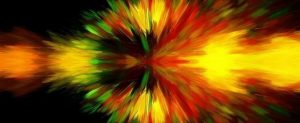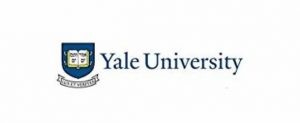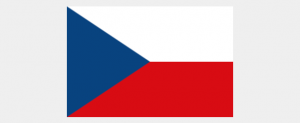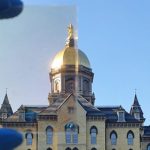Quantum News Briefs January 5: Post-quantum cryptography to be the main focus in 2023? Light source produces two entangled light beams; Yale researchers develop an on-chip photon-counting device with potential utility for quantum tech + MORE

Quantum News Briefs January 5 begins with TechWireAsia article asking if “Post-quantum cryptography is to be the main focus in 2023? followed by news of a Quantum breakthrough: Light source produces two entangled light beams. Third is the announcement that Yale Researchers have developed an on-chip photon-counting device with potential utility for quantum tech + MORE
*****
Post-quantum cryptography to be the main focus in 2023?
 TechWireAsia’s Aaron Raj surveys the state of quantum computing around the world in his recent article summarized below by Quantum News Briefs.
TechWireAsia’s Aaron Raj surveys the state of quantum computing around the world in his recent article summarized below by Quantum News Briefs.
Quantum computing continues to be an area of great interest for many around the world and is expected to gain more interest in 2023. While quantum computing use cases have yet to become mainstream, governments and organizations around the globe are already taking the necessary steps in adapting the technology as soon as possible.
With more use cases on the horizon, governments are also taking a huge step in ensuring they are at the forefront of quantum computing research. Currently, both China and the United States are competing to dominate the field.
According to GlobalData’s patent analytics database, US-based tech organizations are leading the patent number in quantum computing. The top three companies that filed the most patents are IBM (1,885 total publications), Alphabet (1,000), and Northrop Grumman (623). However, the Chinese government is also pumping money into quantum computing development including a US$10 billion investment to construct the National Laboratory for Quantum Information Science.
In Asia, apart from China, Japan, Korea, and Singapore have been at the forefront of quantum computing research. In Japan, Fujitsu and Riken research institute plan to jointly offer quantum computers to companies starting April 2023. Meanwhile, in Singapore, the Singaporean government announced its increasing investments in the industry by setting up two new initiatives to boost talent development and provide better access to technology earlier this year.
With quantum computers becoming more powerful, there are now concerns about how they can be used for the wrong reasons. According to the National Institute for Standards and Technology, in a few years, large quantum computers will be powerful enough to breach public key schemes currently in use. This has risen concerns on hack now and decrypting later that is being conducted by some cyber criminals.
Hence, to be prepared for such incidences, IT security systems need to be able to resist this. And this is where post-quantum cryptography comes in. The goal of post-quantum cryptography is to develop cryptographic systems that are secure against both quantum and classical computers and can interoperate with existing communications protocols and networks. Related: See IQT Research Post-Quantum Cryptography: Market Opportunities 2021-2030 for comprehensive details.
Click here to read TechWireAsia article in-entirety.
*****
Quantum breakthrough: Light source produces two entangled light beams
 Brazil’s Laboratory for Coherent Manipulation of Atoms and Light (LMCAL) at the University of São Paulo’s Physics Institute (IF-USP) researchers succeeded in developing a light source that produced two entangled light beams. Quantum News Briefs summarizes January 5 announcement from SciTechDaily.
Brazil’s Laboratory for Coherent Manipulation of Atoms and Light (LMCAL) at the University of São Paulo’s Physics Institute (IF-USP) researchers succeeded in developing a light source that produced two entangled light beams. Quantum News Briefs summarizes January 5 announcement from SciTechDaily.
“This light source was an optical parametric oscillator, or OPO, which is typically made up of a non-linear optical response crystal between two mirrors forming an optical cavity. When a bright green beam shines on the apparatus, the crystal-mirror dynamics produce two light beams with quantum correlations,” said physicist Hans Marin Florez, last author of the article.
“Our group showed in previous work that atoms themselves could be used as a medium instead of a crystal. We, therefore, produced the first OPO based on rubidium atoms, in which two beams were intensely quantum-correlated, and obtained a source that could interact with other systems with the potential to serve as quantum memory, such as cold atoms,” Florez said.
However, this was not sufficient to show the beams were entangled. In addition to the intensity, the beams’ phases, which have to do with lightwave synchronization, also needed to display quantum correlations. “That’s precisely what we achieved in the new study reported in Physical Review Letters,” he said. “We repeated the same experiment but added new detection steps that enabled us to measure the quantum correlations in the amplitudes and phases of the fields generated. As a result, we were able to show they were entangled. Furthermore, the detection technique enabled us to observe that the entanglement structure was richer than would typically be characterized. Instead of two adjacent bands of the spectrum being entangled, what we had actually produced was a system comprising four entangled spectral bands.” Click here to read the SciTechDaily coverage in-entirety.
*****
Researchers develop an on-chip photon-counting device with potential utility for quantum tech
 A team of researchers at Yal University has developed an on-chip photon-counting device that could significantly advance numerous applications of quantum technology. Quantum News Briefs summarizes recent announcement below.
A team of researchers at Yal University has developed an on-chip photon-counting device that could significantly advance numerous applications of quantum technology. Quantum News Briefs summarizes recent announcement below.
The laboratory of Hong Tang, the Llewellyn West Jones, Jr. Professor of Electrical Engineering, Applied Physics & Physics at Yale, has developed the first realization of an on-chip photon-number-resolving (PNR) detector that can resolve up to 100 photons at a time. This detector shows its power in resolving the photon statistics of a light pulse. The results are published in Nature Photonics.
Photon-number-resolving (PNR) detectors are considered the most desired technology for measuring light. With very high sensitivity, they can resolve the number of photons even in an extremely weak light pulse. They’re essential to a vast range of quantum applications, including quantum computing, quantum cryptography and remote sensing. However, current photon counting devices are limited in how many photons they can detect at once – usually only one at a time, and not more than 10.
The device from the Tang group, though, not only advances PNR capability by up to 100, but also improves by three orders of magnitude on the counting rate. It also operates at an easily accessible temperature.Because of this, the device allows for a broader range of applications, Tang said, “especially in lots of fast-emerging quantum applications, such as large-scale Boson sampling, photonic quantum computing, and quantum metrology.” Click here to read complete news announcement.
*****
US Embassy frames new opportunities in quantum tech for the Czech Republic
 Christy Agor, Chargé d´affaires at the US Embassy in the Czech Republic hosted a recent discussion titled “Game-Changing Quantum Tech: Framing New Opportunities for the Czech Republic” which focused on the latest technological trends in the field of quantum technologies.
Christy Agor, Chargé d´affaires at the US Embassy in the Czech Republic hosted a recent discussion titled “Game-Changing Quantum Tech: Framing New Opportunities for the Czech Republic” which focused on the latest technological trends in the field of quantum technologies.
Key Czech government, academia and industry experts attended the event. Robert Loredo, IBM’s Quantum technical business development lead introduced the opportunities that quantum brings for the future as well as IBM capabilities in this segment. Igor Jex, quantum technology expert,presented on the state of quantum research in the Czech Republic.
Christy Agor explained, “. . .Quantum Information Science and Technology is an area that is a top scientific priority for the United States, the European Union, and of course the Czech Republic. The United States recognizes the tremendous economic implications of quantum technologies. Quantum applications could help us supercharge artificial intelligence, devise better clean energy technologies, and have applications across space, finance, health, and many other sectors. However, the United States also recognizes there are profound national security implications to quantum science and technology. . . To discuss the best approach and jumpstart mutual collaboration, we have invited IBM – one of the world’s leading companies in quantum – as well as top local representatives from academia, industry, and government to the residence this evening. I believe with this line-up we can open the next chapter on quantum for the Czech Republic.” Click here to read coverage from the US Embassy in the Czech Republic.
*****
Sandra K. Helsel, Ph.D. has been researching and reporting on frontier technologies since 1990. She has her Ph.D. from the University of Arizona.



















